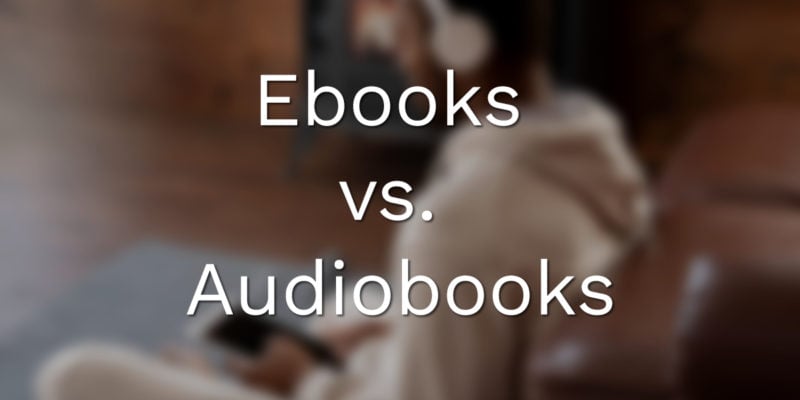You’ve poured your heart and soul into creating amazing content. Now comes the million-dollar question: how do you serve it up to your audience? Should you go for an ebook, an audiobook, or both? It’s a tough call, but don’t sweat it. We’re going to crack this puzzle together.
Getting Inside Your Audience’s Head
First things first, let’s talk about who’s going to consume your content. Your readers (or listeners) aren’t just faceless numbers – they’re real people with busy lives, preferences, and habits. Some of them might be professionals trying to squeeze in some learning during their commute. Others could be students who need to highlight and scribble notes all over your work. And let’s not forget the fiction lovers who just want to lose themselves in a good story.
Understanding your audience is like having a secret weapon. It guides your format choice and helps you create content that really resonates.
So how do you get this insider knowledge? Simple: ask them. Run a survey, dive into your social media insights, or even have one-on-one chats with some of your followers. Find out how they like to consume content, when they do it, and what frustrates them about current formats.
Here’s a quick breakdown of what different audience types typically prefer:
| Audience Type | Ebook Preference | Audiobook Preference |
|---|---|---|
| Busy professionals | Quick reference, visual aids | Hands-free consumption |
| Students | Highlighting, note-taking | Supplementary learning |
| Fiction lovers | Reading at own pace | Immersive storytelling |
| Visual learners | Diagrams, charts | – |
| Auditory learners | – | Narration, sound effects |
Ebooks

Now, let’s talk ebooks. They’re not just words slapped onto a screen – they’re a whole new way of experiencing content. Think about it: you can carry an entire library in your pocket, adjust the font size when your eyes are tired, and search for that one quote you vaguely remember but can’t quite place.
Ebooks shine when your content is:
- Packed with visuals
- Needs frequent updates
- Benefits from interactivity
- Requires annotation
Imagine you’re writing a cookbook. As an ebook, you could include zoomable photos of each dish, embedded videos of tricky techniques, and even interactive shopping lists. Pretty nifty, right?
But let’s keep it real – ebooks aren’t perfect. They need a charged device to read, which can be a pain when you’re on a long flight or camping trip. Some people find reading on screens tiring, especially for long stretches. And let’s face it, nothing quite replaces the feel and smell of a physical book.
Audiobooks

Now, onto audiobooks. These aren’t just for people with long commutes (though they’re great for that too). Audiobooks open up a whole new world of multitasking possibilities. Doing the dishes? Learning a new language. Jogging? Catching up on the latest bestseller. It’s like having a personal storyteller following you around all day.
Audiobooks are fantastic for:
- Narrative-driven content
- Material that benefits from vocal interpretation
- Reaching visually impaired audiences
- Content that’s consumed on-the-go
The magic of audiobooks lies in the performance. A great narrator can bring your words to life in ways you never imagined. They can make your audience laugh, cry, or sit on the edge of their seat – all through the power of their voice.
But here’s the catch: audiobooks aren’t great for everything. Try listening to a complex technical manual or a statistics textbook, and you’ll see what I mean. They’re also trickier to navigate – ever tried to find that one specific quote in an 8-hour audiobook? Not fun.
It’s Not One-Size-Fits-All
Here’s the thing: not all content works equally well in all formats. A dense academic text might be a nightmare to listen to but perfect as an ebook where readers can pause, reflect, and take notes. On the flip side, a collection of poetry might come alive when read aloud but lose some of its magic on a screen.
Consider this breakdown:
| Content Type | Ebook Suitability | Audiobook Suitability |
|---|---|---|
| Fiction | High | High |
| Technical manuals | Very High | Low |
| Self-help | High | High |
| Academic texts | Very High | Moderate |
| Poetry | Moderate | High |
The key is to think about how your audience will use your content. Will they need to flip back and forth between sections? Are there visual elements that are crucial to understanding? Does the material benefit from the rhythm and flow of spoken word?
The Cost of Creating

Let’s talk cash. Creating an ebook is generally cheaper than producing an audiobook. For an ebook, you’ll need editing, formatting, and a snazzy cover design. Audiobooks? They’re a whole different ball game. You’ll need a professional narrator (unless you’re brave enough to do it yourself), recording equipment or studio time, and audio editing. It adds up fast.
If you’re working with a tight budget, starting with an ebook might be your best bet. You can always add an audiobook version later if there’s demand for it.
Sure there’s cheaper AI software like AI writing tools and AI text-to-audio conversion platformsthat can reduce the cost and even the playing field.
Accessibility
Here’s something we don’t talk about enough: accessibility. Audiobooks are a game-changer for people with visual impairments or reading difficulties like dyslexia. They open up worlds of literature and information that might otherwise be out of reach.
Ebooks have their own accessibility perks too. Readers can adjust font sizes and colors, making it easier for people with visual impairments or conditions like ADHD to engage with the content.
The Best of Both Worlds
Who says you have to choose? Offering both ebook and audiobook versions can help you reach the widest possible audience. If you go this route, create your ebook first and use it as a script for your audiobook narration. You could even offer bundle deals to encourage people to try both formats.
Making the Call
So, how do you decide? Start by asking yourself these questions:
- What’s the main purpose of my content?
- How does my target audience prefer to consume information?
- What’s my budget?
- How often will I need to update the content?
- Does my content rely heavily on visual elements?
There’s no one-size-fits-all answer. Some content thrives in both formats, while other material is clearly better suited to one or the other.
Don’t be afraid to experiment. Start with the format that seems best for your content and audience, but keep an open mind. As you grow your platform and get to know your audience better, you might find opportunities to expand.
The best format is the one that gets your message across effectively and provides the most value to your audience. Choose wisely, and you’ll be well on your way to digital publishing success.
And hey, if you’re still not sure, why not ask your audience directly? Their preferences might surprise you and offer insights you hadn’t even considered. After all, they’re the ones who’ll be reading (or listening to) your content. Their input could be the key to making your content not just good, but unforgettable.
